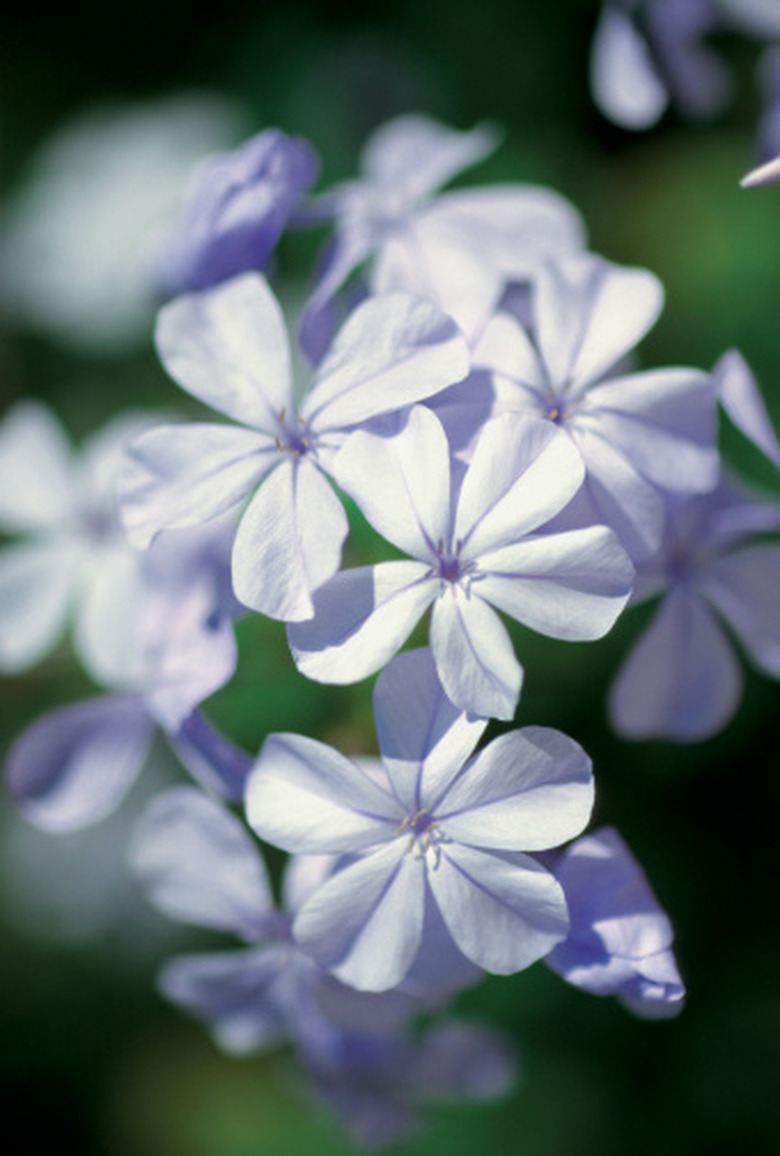Should I Cut Back Plumbago In Winter?
Native to South Africa, the plumbago is used as an ornamental landscape plant in the southern parts of the United States. The evergreen shrub is hardy to U.S. Department of Agriculture zones 9 through 11, with the plant susceptible to frost damage in freezing conditions. The plant can grow into an unruly shrub if it is not pruned, although cutting the plant back in the winter is not commonly practiced.
Pruning
Prune the plumbago to remove the dying flowers. By removing these dead flowers the plant is encouraged to continue flowering. The pruning process can also be used to maintain the plants' shape. However, too-frequent pruning, such as in attempting to maintain a hedge shape, can result in fewer blooms overall.
- Native to South Africa, the plumbago is used as an ornamental landscape plant in the southern parts of the United States.
- The plant can grow into an unruly shrub if it is not pruned, although cutting the plant back in the winter is not commonly practiced.
Blooming Period
The plumbago displays its white or blue flowers through much of the summer and into the fall. Given the plants southern ranges this means an extremely long flowering period. The plant produces flowers on new wood so pruning that removes old wood and encourages new growth increases the number of flowers.
Growing Conditions
USDA zones 9 through 11 are the Deep South and includes places like Florida, south Texas and the desert Southwest. These areas maintain warm conditions conducive to plumbago blooms through December. The shrub grows rapidly and can spread to as much as 10 feet across although commonly grows no higher than 4 feet. The plant is drought and heat tolerant although extreme warm weather may reduce the brightness of the blooms.
- The plumbago displays its white or blue flowers through much of the summer and into the fall.
- The plant produces flowers on new wood so pruning that removes old wood and encourages new growth increases the number of flowers.
Varieties
There are a limited number of cultivars of the plumbago. The Alba produces white flowers making it the exception to the plant which is sometimes known as the sky flower for its blue color. The Imperial Blue and Royal Cape have the traditional blue flowers and are considered hardier than the Alba variety.
